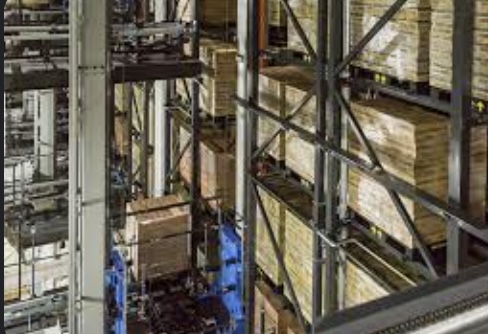Sky High: Maximizing Productivity with Industrial Lifting

Industrial lifting plays a crucial role in various industries, from construction and manufacturing to logistics and transportation. The ability to lift and move heavy materials and equipment is essential for maximizing productivity, reducing costs, and ensuring the safety of workers.
Industrial lifting equipment, such as cranes and hoists, enables workers to handle heavy loads with ease and precision, reducing the risk of injuries and accidents. This allows companies to complete projects more efficiently and on time, leading to increased profits and customer satisfaction.
In this article, we will discuss the types of industrial lifting equipment available, as well as their benefits and drawbacks. We will also provide tips on how to choose the right equipment for your needs. Finally, we’ll review some safety considerations when using these machines.
The Different Types of Industrial Lifting Equipment
There are numerous types of industrial lifting equipment available, each designed to meet different needs and requirements.
Firstly, cranes are the most common type of industrial lifting equipment. They usually consist of a trolley with a hoist at the end which lifts heavy materials and objects with ease. Cranes can be used to move objects from one location to another and can be rented instead of purchased for temporary projects.
Hoists are another type of lifting equipment used in industrial settings. These devices use a rope or chain system to suspend and transport heavy materials vertically or horizontally. Chain hoists are usually more reliable than rope hoists, but require more maintenance and upkeep.
Lastly, jacks are used to lift heavy objects for short distances. They come in various sizes and capacities, making them suitable for a variety of applications. However, due to their limitations, they are not ideal for-distance lifting or transportation tasks.
Benefits and Drawbacks of Industrial Lifting Equipment
Industrial lifting equipment has numerous benefits, including increased safety and productivity. By providing a safe and efficient way to move heavy materials and objects, workers can reduce the risk of accidents and injuries on the job. Additionally, having the right equipment for a project can lead to faster completion times and lower labor costs.
On the other hand, improper and unsafe use of industrial lifting equipment can result in costly accidents and repair costs. This is why it’s important to select the right equipment for the job, maintain and inspect it regularly, and train your workers on how to use it safely.
When choosing the right lifting equipment, it’s important to consider factors such as size, capacity, and the type of materials you will be moving. Investing in quality equipment is for ensuring worker safety and maximizing.
Safety Considerations
Safety is the number one priority when it comes to using industrial lifting equipment. All workers should receive proper training and instruction on how to use the equipment correctly. It’s a must to check and inspect the equipment before each use to make sure it’s in good condition.
In addition, workers should always wear appropriate safety gear such as hard hats, steel-toed boots, gloves, and goggles when using these machines. It’s also important to have designated areas for the safe lifting and transportation of materials.
Another safety consideration is to make sure that no bystanders are in the vicinity when using cranes and hoists. All personnel should be aware of the potential hazards and risks associated with these machines.
Finally, it’s important to have a proper maintenance and repair plan in place for all industrial lifting equipment. Regularly maintaining and inspecting the machines can help extend their lifespan, reduce downtime, and improve safety on the job.
Conclusion
Industrial lifting equipment is essential for many businesses, especially those that handle large objects or materials. It can help reduce the risk of accidents and injuries, while also providing a more efficient way to transport materials. There are numerous types of lifting equipment available, such as cranes, hoists, and jacks. It’s important to choose the right type for your needs and ensure that workers receive proper training on how to use it safely.




























